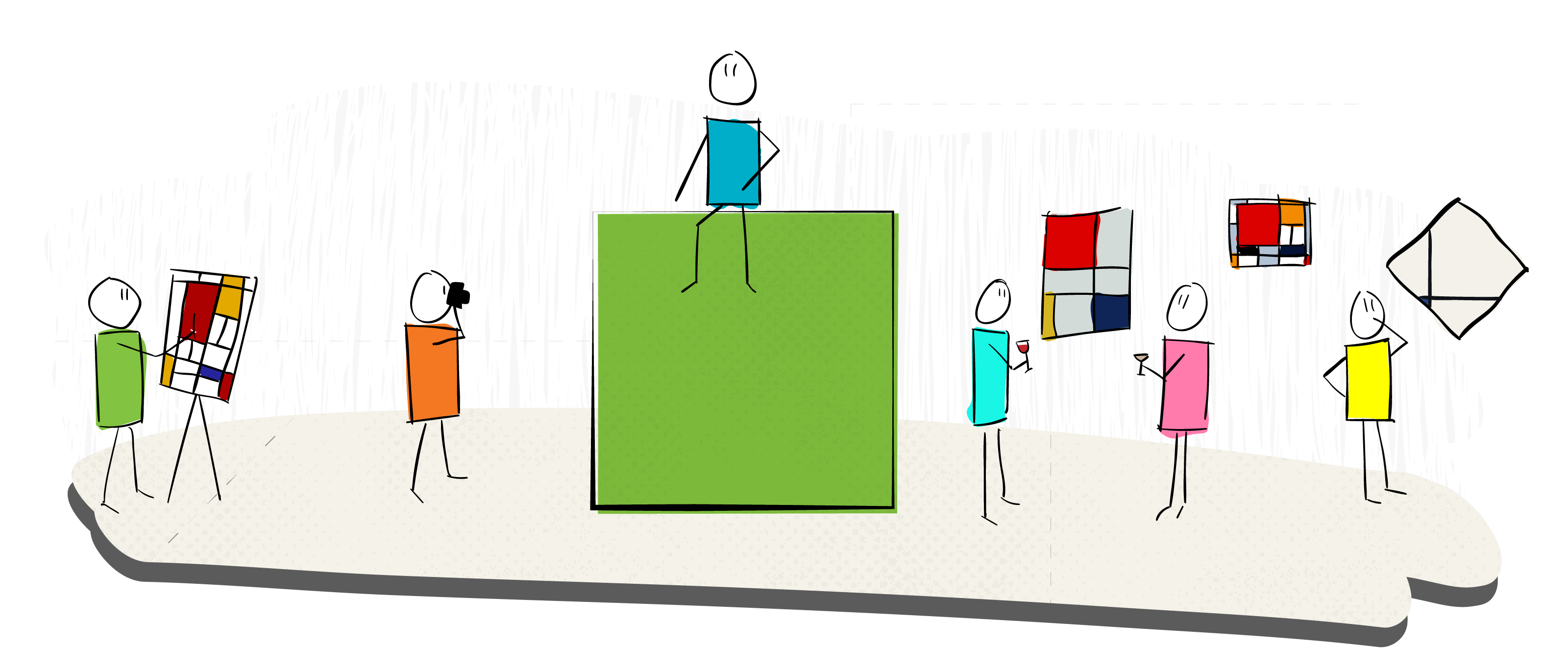Perfect Plans Part 1

Creating membership plans can feel like a shot in the dark for coworking spaces that are just starting out. Many founders spend too much time building for edge cases or too little time and simply copy what others are doing. What follows are proven strategies to create membership plans that work for you and your brand, and that minimize ongoing admin time.
Few people, when starting their coworking brands, give proper treatment to the setup of their membership plans. They either copy what other spaces have done, without thinking about their own audience or operational needs, or they try to plan for every edge case possible. Over time, founders and managers can find that their plans make little sense for how their coworking spaces actually operate or for the members they actually attract. They also often find that they’ve attracted many annoying members that never seem to be satisfied.
Your membership plans are, put in more familiar business terms, your core products, just as the Macbook, the iPhone, the Watch, and the iMac are the core products of Apple. Think about this: does Apple merely copy the products of others, all the while thinking, “this is just how it’s supposed to be”? No, of course not. They create products that fit their brand and that their audience will love. So why would you do any different with your core products: your membership plans?
Well, after reading this article, you hopefully won’t!
I think that membership plans are a key way to differentiate yourself from competitors and create delight for your members. The topic of membership plan structure and strategy is a big one, and we’re going to cover a lot of ground. For this reason I’d like to start by getting back to basics so we can look at membership plan structure with a fresh perspective.


Anatomy of a Membership
Chances are, you think you already know how a coworking membership is structured. And likely you’re mostly right. But in the quest to create the perfect plan, let’s go over it in detail because I’m betting there are some anatomical nuances you might not be aware of.
So what is a membership anyway? For my team at Habu and myself, all memberships consist of three elements:
- a plan,
- add-ons or extras, and
- a subscription

Now, you’re probably asking yourself, “aren’t plans and subscriptions the same thing?” Actually, no. While these two terms are often used synonymously, they’re pretty different.
A membership plan is a structure consisting of a fixed cost and fixed benefits. An individual plan is the same for everybody who is assigned to it. And a membership add-on, similar to a plan, is a structure with a fixed cost and fixed benefits. However, add-ons are only available in conjunction with a plan.
A membership subscription, on the other hand, is a flexible structure consisting of a plan, add-ons or extras, a customizable price, and a recurring billing cycle.
In other words, plans and add-ons are merely the what part of a membership, whereas the subscription is the when and the how. For example, have you ever noticed that when you sign up for an online service, they often present two prices for the same plan; a monthly cost and an annual one? The plan, or the what you get, is the same in both cases, but the subscription, the how and when you’re billed, is different. Subscriptions, therefore, are where all the flexibility, deal-making, customizability, and multi-month discounts come in.
An aside: if you want to stay sane, you should never customize your plans. Instead, you should allow for customization by providing desirable add-ons and flexible subscription terms, including long-term discounts.
Anatomy of a Plan

Plans also have a set structure, which consists of two parts:
- cost, and
- benefits
The role of cost within a plan is obvious. Cost is the base price your member will pay for the plan.
Benefits are more interesting to think about as they can be almost anything under the sun. While typical benefits may include access to the coworking space and a set number of meeting room hours, they can also include guest passes, lunch every Thursday, the ability to borrow an extra monitor from the closet, mentoring services, and much more. Benefits are where you can spice up your plans, making them ideally suited for your coworking brand and community, and delight your members. We'll get to that in a bit.
Anatomy of Add-ons

Add-ons are quite similar to plans with regard to their structure. As pointed out earlier, the main difference is that add-ons can only be added to a subscription in conjunction with a plan which is why they're called add-ons!
Also, add-ons are structured similarly:
- cost, and
- benefits
Much like adding on useful accessories while purchasing a new camera or computer, the costs of coworking plan add-ons should be much lower than the plan itself. The point with add-ons is to make no-brainer upsales. Your member should be thinking, “Oh, a storage locker is only an extra $25/mo? Sold!”
Note: your price and member exuberance may vary.
Benefits for add-ons can be for extra allowances, such as more meeting room hours or space access time, but they can also be used for things like parking passes, storage lockers, and equipment rental.
The point with add-ons is for people to be able to opt into benefits that others may not need, but that some will want for an extra cost. This allows you to keep your plan prices lower, whereas if you’d included the benefit for all your plans, prices would be higher and you would only attract those interested in the complete package on offer. The decision process of whether to make a particular thing a plan benefit or a paid-for add-on will help you structure the culture and makeup of your membership community, as we’ll cover in a few sections.
Anatomy of Subscriptions

Okay, we’re almost out of the woods with defining structures and I promise we’ll get to the tactical stuff after this section so bare with me!
Subscriptions also have a structure:
- length,
- upfront cost,
- cancellation terms, and
- discounts
Length is the time span of the subscription, which also denotes when the subscription will renew. Subscription lengths can be any time span you want. And while monthly and annual time spans are typical, I've also seen weekly, and quarterly subscriptions terms used semi-frequently.
Understand that these subscription terms do not equate to a contract, but a prepayment where the member pays the entire amount of the subscription up front. It's typical for most subscriptions to auto-renew unless cancelled under the space's cancellation policy.
Upfront costs are for things such as deposits, setup fees, or new member fees. While some coworking spaces implement upfront costs, I advise against them as it creates signup friction, reducing the number of new members you’ll attract. However, if you can afford the slower growth, this can be a great way to be more exclusive.
Cancellation terms vary by space as well. Some spaces allow members to cancel at any time, while others require 15 or even 30 days notice to cancel a membership. In general, unless you’re using payment automation, such as with Habu’s payment processing system, I find it pointless to implement cancellation terms. Though it might be a valuable deterrent. Setting the rules down is good, even if you can't enforce them. However, without payment automation, some members will not pay, then disappear without any notice.
But even with payment automation, cancellation terms can be difficult to enforce. Most SaaS companies know this and will refund your money even if you've already paid for a service and are a few days past the renewal date. I suppose this is because it's just hard to keep the moral high ground while making the case that somebody should be billed for something that they cannot or will not use.
Discounts can be added based on how the above three structural items are set up. I’m pro offering some discounts in the beginning because your goal is to fill the space with as many amazing people as you can. Discounts for members who subscribe to longer term subscriptions (prepaid) can range from 10-30% depending on length, though the exact amount is entirely up to you, your financial situation, and your desire to fill empty seats.
You should absolutely provide discounts for businesses that reflect, promote, or resonate with your brand values, whether you are social-enterprise-focussed or not. Additionally, it can be a great idea to provide discounts for groups or individuals that are considered valuable influencers. And lastly, you should consider discounts for those paying a larger deposit or who agree to stricter cancellation terms.

---
Phew! With all that structural stuff out of the way, we can finally move on to tactics and strategy.
The next sections provide insight and practical tips for implementing the best membership plans for your space and truly differentiating yourself from the competition with your unique plan setup.
Practical Generosity - How to Create Perfect Plans
The first place to start your plan-making may sound controversial, but you start by being self-interested. You begin by thinking about what you want out of your members, community, and space.

What kinds of members do you want to attract? How do you want them to behave in your space? How much time do you realistically want to spend administrating or interacting with members? How much money do you want to make? Will you do this full-time or part-time? What services do you want to provide and what do you explicitly not want to offer?
Once we’ve answered those questions from the standpoint of our self-interest, we need to consider the interests of others with generosity. After all, coworking spaces aren’t all about us. We create them for the members who will occupy them, and the best way to attract people to your space is to make them feel like their getting more value than they are paying for.

What unique benefits can you surprise and delight members with? What benefits can you build into your plans that people typically pay for? What add-ons can you provide specifically for your audience or community culture?
As an aside, before you even think about adding “amazing community” to your list of membership benefits, consider that pretty much every space does that. The presence of a community at your space is assumed. So it's not an excellent choice for an included plan benefit. Besides, a community is something that happens in a coworking space, if it happens at all. It's not something that people buy (again, because it's assumed). Community is a reason why people stay.
Okay, back to our self-interested, generous plan making.
Let’s call this two-step process practical generosity. It’s practical because you’re thinking about what you want and need first, and that’s the only way this whole thing can be sustainable. It’s generous because you’re giving members more than they expect, which is also still practical because it’s a great marketing tactic. See, practical generosity. Using practical generosity when creating your membership plans will give your space an edge over the competition and attract more of the types of members you really want. You’re happy and so are your members.
For example, let’s consider Irina who's starting a shared workspace for artists and multimedia creatives. She's done her research and given her audience a lot of thought. She wants:
- To attract creatives (designers, filmmakers, artists, etc.), but not tech or startups
- For members feel at home in the space and use it for their creative projects
- To spend her time doing her own art and work, mentoring and interacting with members, and as little time on admin as possible
- To provide space for workshops and events for creatives and artists, so they can learn and share their work
- To provide good wifi, large open spaces, and shared art resources for members to use
- For members to connect genuinely over coffee and meals
- To not provide phone call booths, meeting rooms, or private offices because that feels too corporate
From this exercise, we can imagine what the plans at Irina's space would look like. Perhaps something like this:
Plans
Full Time Flexible - $300.00/mo
- 24/7 access
- Access community art supply closet
- Large open spaces for creating
- Slow, but tasty coffee
- Weekly artists’ potluck
- Bespoke events for creatives
- 2 hours of event space use per month
Full Time Fixed - $500.00/mo
- 24/7 access
- Beautiful dedicated desk w/ optional storage
- A super-comfy and adjustable chair
- Slow, but tasty coffee
- Weekly artists’ potluck
- Bespoke events for creatives
- 4 hours of event space use per month
Add-ons
Storage Cage - $50/mo
- 5x5x10ft
- Private keycode entry
Storage Locker - $20/mo
- 1x1x5ft
- Adjustable shelves
- Key lock
You might have noticed that there are no part-time plans or day passes. Irina wants to reduce admin, so dealing with part-timers isn’t something she is interested in.
Irina also knows from personal experience that creatives work on all sorts of media. Some traditional artist types may not need a permanent spot, but might need a place to store their things, hence the storage cage. Graphic designers and filmmakers will likely want more of a permanent setup for all those extra monitors and equipment, and maybe an attached storage locker for storing expensive equipment. However, the locker doesn’t need to be as large as the storage cage.
Instead of charging for the event space, Irina included its use in her members' plans because she genuinely wants to encourage people to share knowledge and show off their work. She believes the event space allowances will be used for hosting workshops on video editing, drone filming, oil painting classes, and quick tips for Adobe workflows. She also imagines they will be used for art gallery nights and arts charity events.

Stealing a page from her favorite coworking founders, she plans to intentionally buy coffee machines that are a little slow and only make a single cup at a time. This will force a queue at the coffee machine, creating an excuse for new people to interact with one another. What’s more, the weekly potluck will be a great place for members to get some tasty food and connect, without Irina needing to organize catering.
What’s clear from this example is that Irina knows what she wants, a vibrant community of artists and creatives who actively use the space and grow together as a community. She's set herself up to minimize admin time, priced her space in a range where she'll make money, but where members won't feel like they are being gouged. In fact, members will be delighted about the generosity of the plans.
Additionally, the copy from the plans suggests something a bit more fun than you'd find in a typical coworking space. It comes off as if Irina knows the artist's life because she does, and genuinely cares about her members' wellbeing. I know if I were an artist, I'd be there in a heartbeat.
“But, Ryan,” you may be thinking, “We’re not some cool art-focused coworking space! We’re just a typical space with freelancers and startups. How does this apply to me?”
Glad you brought that up because that is precisely why I used the artist space example. It's true, most of us aren't running super-cool artist and creative-focused coworking spaces. And that's precisely why it's easy and fun to come up with creative membership benefits. It's easy to think about them because we can view it externally, without expectations.
In other words, I used the example to prove it could be done. Often, it helps to take a step back and view what we're doing as an outsider or to try our hand at benefit brainstorming for another type of space. We're bound to come back to our situation with some fresh ideas that are readily transferable to the industries we're focused on.
So take this same thinking and apply it to your typical coworking space. I think you’ll discover that, through this process, you won’t consider yourself a typical space after all.
Never miss a beat!
Want to see it in action?
Marketing Director, founder at Coworking Insights, coworking maven, digital nomad, lover of wine & tacos.



